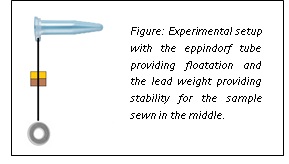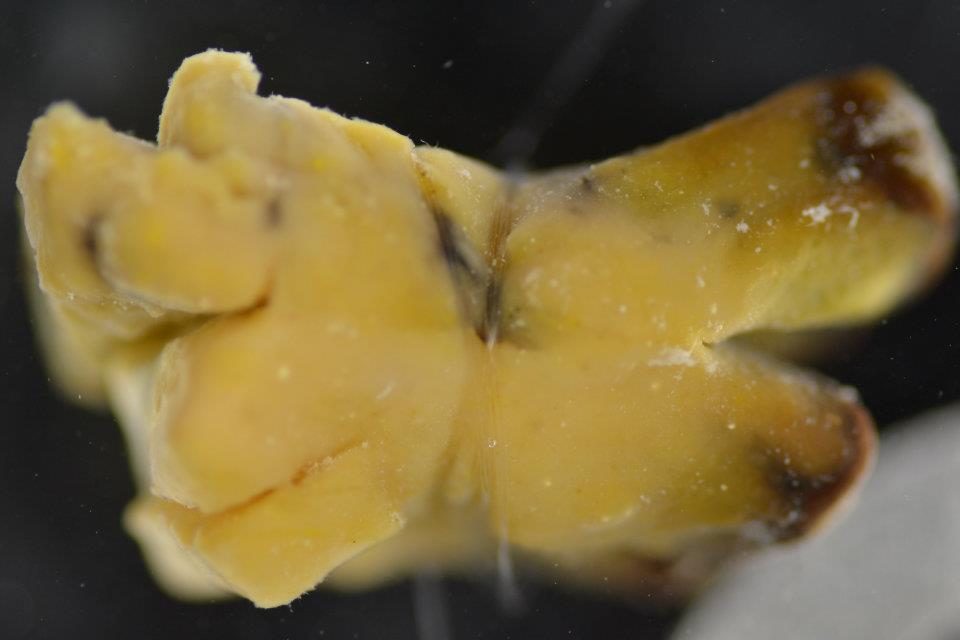Cell Biology
Allorecognition in the marine sponge Rhabdastrella globostellata (Carter, 1883)
Case study from Heron Island, Great Barrier Reef, undertaken 19-24th September, 2011
Species-specific cell recognition in sponges, termed allorecognition, is mediated by extracellular factors termed aggregation factors (AFs) (Fernandez-Busquets et al., 1998) and undergo a fusion-rejection response (Nicotra et al., 2009). Allorecognition is the ability of an individual to recognise self from non-self tissue within the same species, and is ubiquitous among colonial metazoans (Nicotra et al., 2009; Rosa et al., 2010). A key gene involved was positionally cloned in an inbred strain of Hydractinia symbiolongicarpus, a model cnidarian used in invertebrate allorecognition studies (Nicotra et al., 2009). A loci was detected that, in the two forms present within the strain, provided the fusion or rejection response (two of the same loci resulted in fusion, mismatching loci resulted in rejection.) In many species the rejection phenomenon is mediated as a part of the immune response to what the organism perceives as foreign antigens, resulting in a histoincompatibility (Afzali et al., 2007).
The process of allorecognition has been linked to immunological responses in organisms from invertebrates to humans (Fernandez-Busquets et al., 1998; Afzali et al., 2007; Nicotra et al., 2009; Rosa et al., 2010). By understanding the mechanism of the allorecognition or allorejection response, the immunological connotations can be better understood and therapeutic advancements made. At current there are still issues with grafting, transplant surgery and transfusions that may benefit from the knowledge gained through allorecognition studies (Afzali et al., 2007).
The prediction put forward as a part of the case study was that Rhabdastrella globostellata would, in grafting experiments, recognise self and non-self tissue and react with a fusion or rejection response. Fusion of complementary tissue leading to a single sample, or histoincompatibility as in a rejection response, a necrosis surface of adjoining tissues. To test the whether Rhabdastrella globostellata would react with a chemical defence or acceptance of foreign sponge tissue, two Amphimedon species (Amphimedon queenslandica and Amphimedon sp.) were used as grafting specimens to R. globostellata in a 42 hour experiment conducted on Heron Island, Great Barrier Reef (2011).
The R. globostellata sample was cut in half and 3-5mm sections sliced from one half using a scalpel blade. This section was then cut into 15x15mm squares. For the Amphimedon queenslandica and Amphimedon sp. (tan coloured, unidentified to species level), sponge tissue was carved from the substrate giving a 3-5mm thick slice. This was then cut into 10-15mm squares. Squares were sewn together so that two cut surfaces were adjoining using fine fishing line and 1mm needle, intraspecies and interspecies, giving 6 pairs. These were attached to an eppindorf tube (top) and small weight (bottom) so that each sample would float in the water at the same level (as per Figure below). Samples were set up at 2PM and observed over a period of 42 hours.

After the initial 24hours, grafting had occurred between the R. globostellata samples but not between the Amphimedon species (intra- or interspecies.) No necrosis was observed between R. globostellata and either Amphimedon species, though A. queenslandica was showing signs of ill-health in tissue colouration. After the complete 42 hour period the R. globostellata samples were fused completely together (image below) while the A. queenslandica samples were showing signs of possible fungal infection and necrosis in all sample sets. With the Amphimedon sp. and R. globostellata sample set, while it showed no necrosis, it had coexisted without change in adjoining tissue.
 Image: Rhabdastrella globostellata samples fused together after the 42 hour experimental period.
Image: Rhabdastrella globostellata samples fused together after the 42 hour experimental period.
The ability of the sponge tissue and microbes to detect self and non-self tissue seems fine-tuned to species, though given the short experimental period may also require a longer period before a chemical response can take effect. The Amphimedon queenslandica is reputedly hard to maintain in good health (Degnan et al., 2010), this may have had an impact on the amount of necrosis seen with these samples. The unidentified Amphimedon sp. appeared healthy and under no particular stress over the 42 hour period. This may implicate that the recognition and fusion processes take less time to coordinate and implement in Rhabdastrella globostellata than a immunological response against foreign matter. Further studies spanning increased time scales and increased species sampling is needed to fully elucidate the process. Since it was found that R. globostellata does recognise self tissue and undergo a fusion response, the next step could include radioactively labelling tissue in each sample to test the level of shared system processes by fused tissues. Increasing the understanding of these processes allows for insights into microbial and immunological workings of both Rhabdastrella globostellata and Porifera as a whole. This can lead into helping current and future therapeutic targets with relation to immunological responses to grafting and transplants in metazoans.
Acknowledgements
I would like to thank Dr John N.A. Hooper of the Queensland Museum for the identification of Rhabdastrella globostellata sample to species, and to Professor Bernard Degnan for running the course and allowing this project to take place.
|